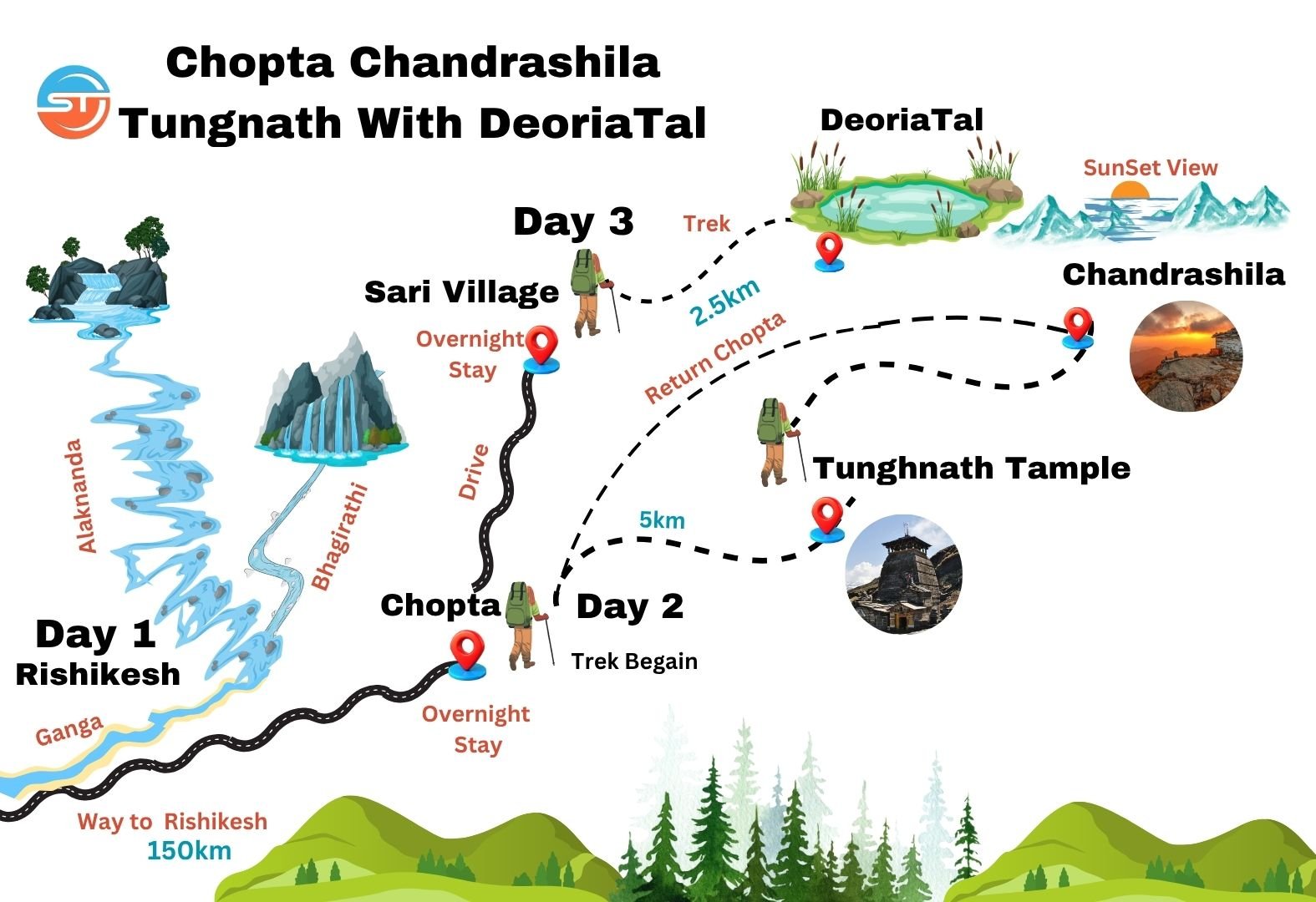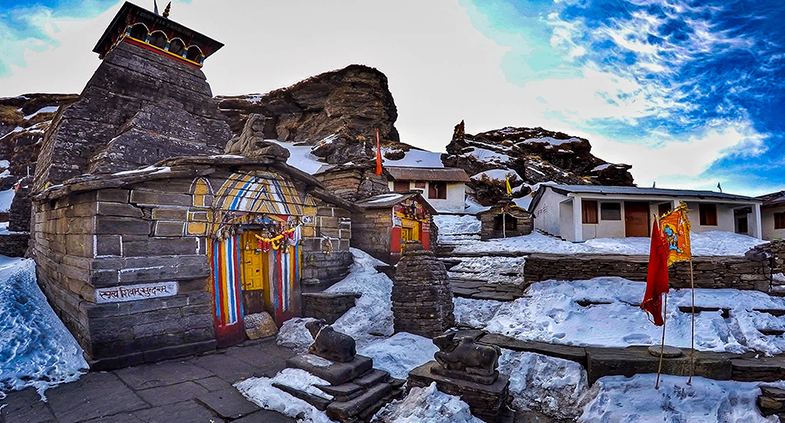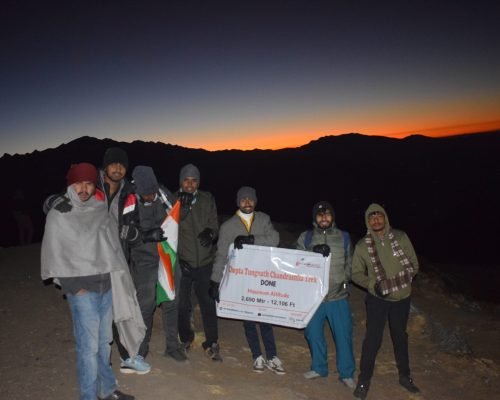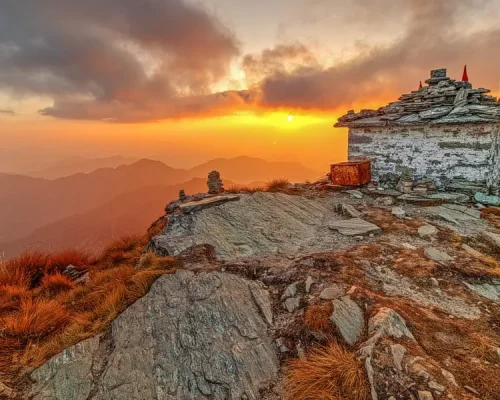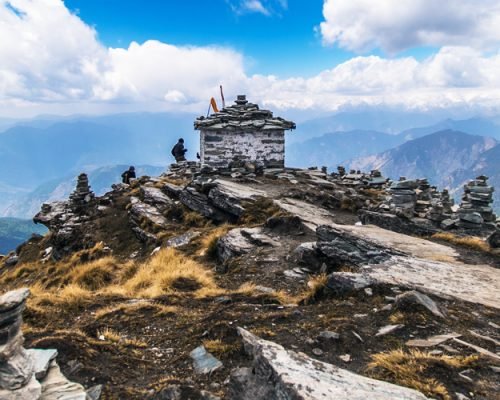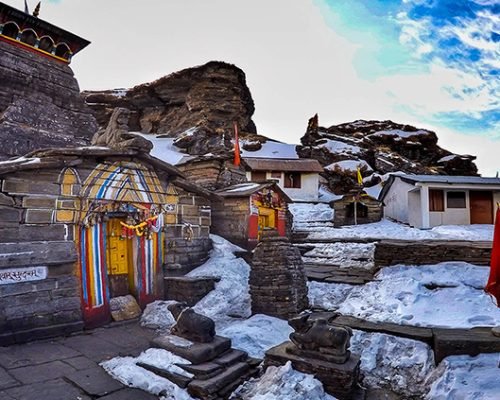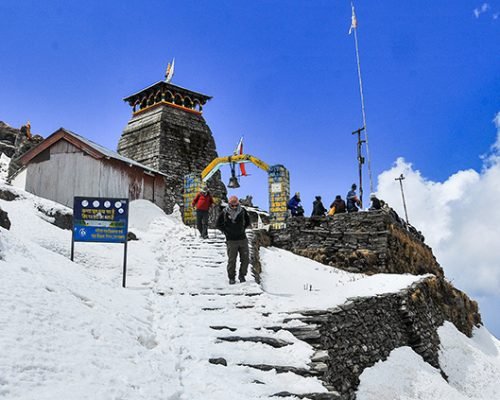Difficulty level of Tungnath Trek
The Tungnath Chandrashila Trek Trek is considered an easy to moderate level trek, making it suitable for beginners, families, and even kids with decent fitness. . The well-paved, gently inclining trail from Chopta to Tungnath is roughly 3.5 km long in one direction. The 1.5-kilometer final stretch from Tungnath to Chandrashila is steeper and can be difficult, particularly in the rain or snow, but it is doable if you move slowly and steadily. All things considered, it’s among Uttarakhand’s most accessible high-altitude hikes for beginners.
Best Time and Essentials for Tungnath Trek
The Tungnath Trek is best experienced between April and November because it is inappropriate to hike in the bitter cold when the area is covered in snow. Proper footwear, warm clothing, and enough water are essential for a successful expedition. The most striking aspect of climbing the Tungnath is the incredibly peaceful fusion of spirituality and nature. There is something for everyone to enjoy that has a lasting effect, regardless of whether you are a serious hiker, simply enjoy the outdoors, or are on a pilgrimage.
Key highlights of Tungnath Trek
Tungnath Temple – World’s Highest Shiva Temple
Chandrashila Peak – Stunning Sunrises & Panoramic Views
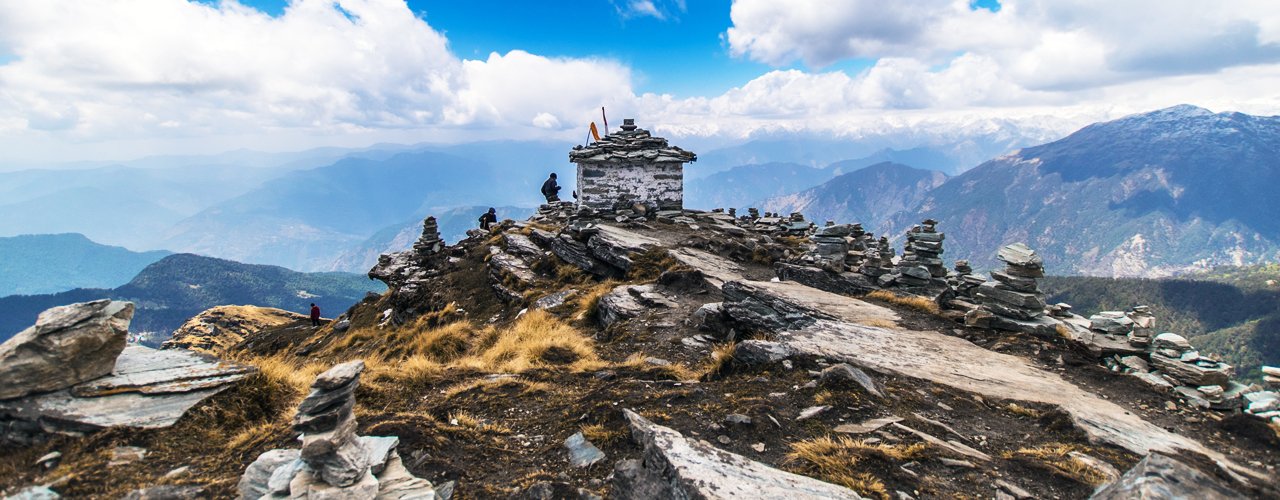
Tungnath is not the end of the journey. At a height of roughly 4,000 meters, Chandrashila Peak awaits those who continue 1.5 kilometers. Chandrashila, which is well-known for its surreal 360-degree view of the Himalayas, rewards early risers with a golden sunrise that illuminates some of the most magnificent peaks, such as Nanda Devi, Trishul, Chaukhamba, and Kedarnath. The entire mountain range seems to be bowing to the sun at this precise moment. The once-in-a-lifetime view that awaits you at the top makes the somewhat steep climb well worth the effort.
Amazing Vegetation and Wildlife – A Natural Paradise
Amazing biodiversity abounds on the Chopta–Tungnath–Chandrashila trail. It is like strolling through a living botanical garden as you trek through the verdant meadows and thick forests of oak, pine, and rhododendron. Red rhododendrons bloom along the trail in the spring. Pheasants, Himalayan Monals, and other local species are visible to birdwatchers. Sometimes you might even see musk deer or mountain foxes. Since the whole area is part of the Kedarnath Wildlife Sanctuary, it’s more than just a hike—it’s an immersive ecological experience.
Cultural Experience – Sacred Trails & Village Life
The profound cultural significance of the Tungnath Trek is what sets it apart. You get a taste of traditional mountain life as you travel through isolated Garhwali villages. The Himalayan way of life, which is based on simplicity, faith, and nature, is revealed by the welcoming locals, modest dwellings, and centuries-old temples along the route. The legends of the Mahabharata and the mythology associated with the temples of Panch Kedar give the trek deeper significance than mere adventure. The journey gains depth as a result of this cultural immersion, becoming more than just picturesque.
Chopta – Mini Switzerland of India
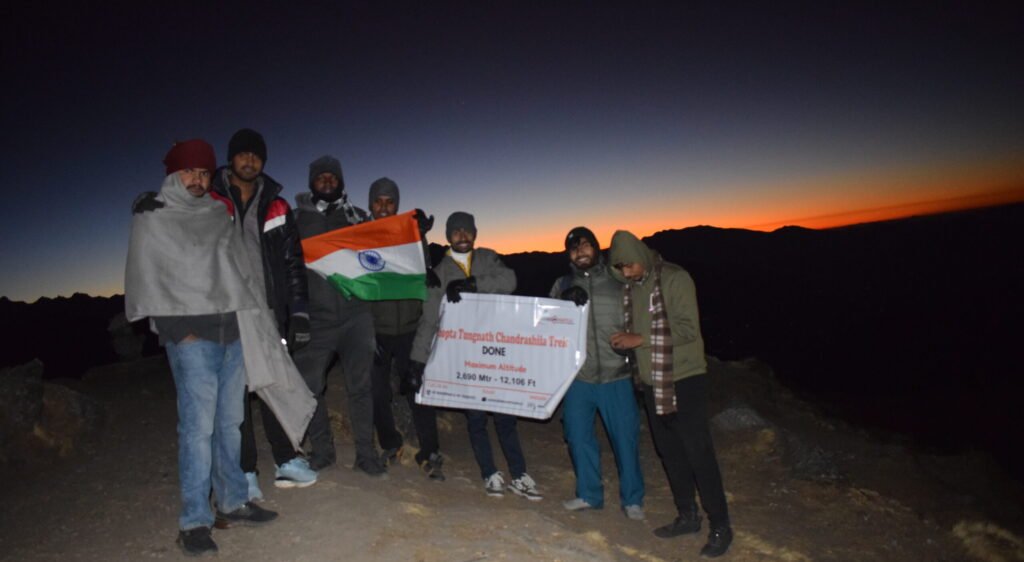
Chopta, the base camp for the Tungnath trek, is often dubbed the “Mini Switzerland of India” for its lush meadows, alpine forests, and snow-draped peaks in the backdrop. Located at around 2,600–2,800 meters above sea level, Chopta is a pristine, offbeat destination that hasn’t been overrun by commercial tourism yet. Whether you’re camping under a starry sky, walking through the misty trails, or just soaking in the silence of the mountains, Chopta offers a peaceful retreat from fast-paced city life. It’s the perfect place to begin the trek or even to just relax and connect with nature.
Tungnath Trek Package – Easy Access, Budget-Friendly Adventure
The affordability and accessibility of the Tungnath Trek are among its best features With Secure Travels. It’s perfect for first-time hikers and low-budget travelers because of its well-maintained trails, simple guesthouses in Chopta, and lack of permits and technical climbing requirements. The majority of two- to three-day Tungnath trek packages include lodging, meals, and transportation from Rishikesh or Haridwar. The hike doesn’t require a lot of equipment and can be completed in a single weekend. The trek offers significant Himalayan rewards with little time and financial commitment, whether you choose to go alone, with friends, or in a guided group.
Chopta Chandrashila Tungnath Map
